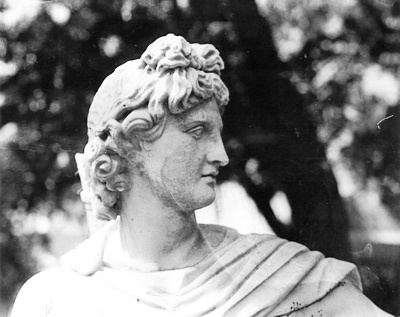All Nonfiction
- Bullying
- Books
- Academic
- Author Interviews
- Celebrity interviews
- College Articles
- College Essays
- Educator of the Year
- Heroes
- Interviews
- Memoir
- Personal Experience
- Sports
- Travel & Culture
All Opinions
- Bullying
- Current Events / Politics
- Discrimination
- Drugs / Alcohol / Smoking
- Entertainment / Celebrities
- Environment
- Love / Relationships
- Movies / Music / TV
- Pop Culture / Trends
- School / College
- Social Issues / Civics
- Spirituality / Religion
- Sports / Hobbies
All Hot Topics
- Bullying
- Community Service
- Environment
- Health
- Letters to the Editor
- Pride & Prejudice
- What Matters
- Back
Summer Guide
- Program Links
- Program Reviews
- Back
College Guide
- College Links
- College Reviews
- College Essays
- College Articles
- Back
Kjartansson's Muses
The concepts of female intuition, competence, and vanity as well as Ancient Greek mythology fuse in Ragnar Kjartansson’s work, Song (2011). Kjartansson’s 366 minute video featured as a part of his exhibit at the North Miami Museum of Contemporary Art.
Kjartansson’s video is centered on Ragnheidur Harpa Leifsdóttir, Rakel Mjöll Leifsdóttir, and Íris María Leifsdóttir, his three nieces. The three girls were filmed singing in Pittsburgh, Pennsylvania at the Carnegie Museum’s Hall of Sculpture, which set the scene grand and regal.
When walking into the exhibit, the atmosphere completely shifts as the hypnotic song of the Leifsdóttir sisters surround the room. Their voices harmonize and compliment each other.
Even as the song picks up then digresses and natural light dims’ the audience is not aware whether the song appeals more to angelic beauty or dark allure. The very meaning of the lyrics, “The weight of the world, the weight of the world is love,” seems so ethereal and mystical.
Adorned in satin dresses, the Leifsdóttirs gaze into mirrors with their deep blue eyes and brush their long blond hair; truly representing their appreciation for beauty and self love. Their sensual movements and intimate hymn resemble both the muses and sirens of Greek mythology.
Les Muses: Clio, Euterpe, et Thalie (1652) by French Painter, Eustache Le Sueur is a visual model to Song (2011). Both pieces draw inspiration from the original three muses, Greek goddesses of art, literature, and science.
Feminist ideals are expressed subtly throughout the video. Their acoustic song sounds like a prayer being sung. They are surrounded by instruments and encompassed with novels by authors such as Emily Dickinson and Charlotte Brontë, giving the artwork a touch of feminist ideals and female liberation; which the Muses symbolized to women throughout the ancient world.
The sisters also embody the divinity of the muses in the birth of Aphrodite (Venus), goddess of love, beauty, and sexuality.
In the video Aphrodite’s sculpture can be scene centered between the girls as they sing just as in Sandro Botticelli’s Nascita di Venere (1486) and The Birth of Venus (1879) by La Naissance de Vénus (1879) by William-Adolphe Bouguereau. The works feature the three muses singing as Aphrodite is born by the waves and they wrap her in precious fabrics. The Leifsdóttirs were wrapped and surrounded by blue silks in their satin dresses as Aphrodite’s sculpture appeared throughout the video.
Even as the song picks up, then digresses and natural light dims’, the audience is cannot conclude whether the song appeals more toward angelic beauty or dark allure. The very meaning within the lyrics, “The weight of the world, the weight of the world is love,” seems so ethereal and mystical.

Similar Articles
JOIN THE DISCUSSION
This article has 0 comments.
